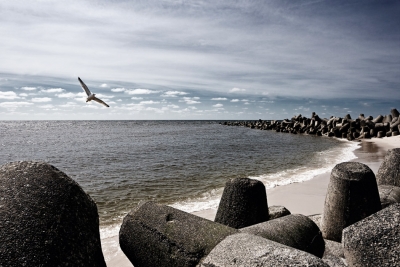
Places where the land meets the sea are crucial for our planet to function. They support biodiversity and the livelihoods of billions of people. But due to pressure caused by human activity, only 16% of coastal areas around the world remain intact, according to a study. The research, involving an international team of experts, revealed an alarming story.
An international team led by researchers at the University of Queensland in Australia has mapped the impact of human-caused pressures on coastal regions to identify those that have been already highly degraded, and those that remain intact. The findings, published in the journal Conservation Biology, provide insights into the widespread impacts of human activity on Earth’s precious coastal ecosystems.
What did the study find?
The research looked at two datasets – one focussed on human impacts on land, and the other observed human impacts from a marine perspective. Both maps use data up to the year 2013 – the most recent year for which cohesive data is available.
- Coastal regions containing seagrasses, savannah, and coral reefs had the highest levels of human pressure compared to other coastal ecosystems.
- More than half the coastal regions have degraded in 84% of countries.
- Earth’s 47.9% of coastal regions have been exposed to very high levels of human pressure.
- Human pressures were high in about 43% of protected coastal regions.
- Scientists believe that some coastal regions have been so degraded that they cannot be restored.
Where are the highly damaged coastal regions located?
High levels of degradation are found in island nations, much of Europe, and in countries including Vietnam, India and Singapore.
Which are the intact regions?
Many of the intact coastal regions are in Canada, followed by Russia and Greenland. Large expanses of intact coast are also found elsewhere including Australia, Indonesia, Papua New Guinea, Chile, Brazil and the United States.
Why are coasts vital?
- Coastal regions encompass some of the most diverse and unique ecosystems on Earth. They include coral reefs, kelp forests, seagrass, tidal flats, mangroves, estuaries, salt marshes, wetlands and coastal wooded habitats.
- Many animal species, including those that migrate, rely on coastlines for breeding, foraging and protection.
- Coastal sites are also where rivers discharge, mangrove forests exchange nutrients with the ocean, and tidal flows are maintained.
- Humans also need coastlines. Among other functions, they support our fisheries, protect us from storms and, importantly, store carbon to help mitigate climate change.
How is human activity impacting the coasts?
As much as 74% of the human population live within 50km of the coast, and humans put pressure on coastal environments in myriad ways. In marine environments, these pressures include:
- Fishing at various intensities
- Water and light pollution
- Recreation and tourism
- Shipping
- Climate change and associated issues such as ocean acidification, sea-level rise and increased sea surface temperatures.
On land, human pressures include:
- Coastal development
- Infrastructure development
- Agriculture and pasture lands
- Clearing of land for settlement
- Plastic and other forms of land pollution
What should governments do?
Governments should take steps to conserve the coastal regions that remain in good condition, while restoring those that have been degraded but can still be fixed.
Other actions should include improving environmental governance and laws related to encroachments, increasing well-resourced protected areas, mitigating land-use change to prevent increased pollution run-off, better community and local engagement, strengthening indigenous involvement in managing coastal regions, effective management of fishing resources, addressing climate change and tackling geopolitical and socioeconomic drivers of damage to coastal environments.
Picture Credit : Google




